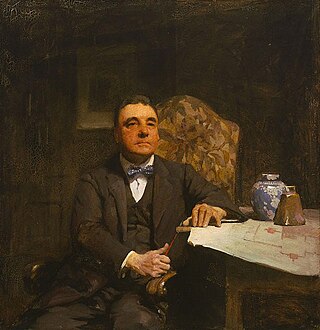Artworks
Material and Artistic Methods
Sages was one of the pioneering artists in Australia to apply the encaustic method to her paintings, as she was inspired by the Fayum portraits of Ancient Egypt. [1] [4] All of her paintings were created on the surface of MDF boards coated with wax. According to journalist Elizabeth Wilson’s observations in 2011, Sages spends a great amount of time on preparatory work, from making markings on the boards to rubbing the incisions with oil and pigment, taking her weeks to finish a single piece. Sages expressed to Wilson that she is fond of the way these materials bring depth and character to her portrait subjects’ faces. Sages creates her work using kitchen knives scraping into the surface of the boards, forming indentations for pigments to settle. She then builds up colour and texture with her fingers and palms using pigments. [4]
Theme and Style
Sages is known in the Australian art scene mainly for her abstract landscape paintings and her deeply connecting portraits. [1]
Portrait

Sages said in an interview that she never takes commission to do portraits because she only does it for her loved ones, motivated by her own interest. [6] Her portrait paintings, including self-portraits, won her 21 Archibald prizes in total.
Sages also composed several self-portraits, including Each morning when I wake up I put on my mother's face (2000) and After Jack (2012). After Jack received the People’s Choice Awards of the 2012 Archibald Prize, for it was voted as the favourite work among the finalists. The work earned Sages her highest achievement in the Archibald prize. The self-portrait is regarded as manifesting "profound human connection" as it is deeply personal for Sages. [15] Sages expressed that the process of painting was driven by grief. After 55 years of marriage to Jack Sages, Jenny Sages explores her new identity and new life without him in this self-portrait. The work was completed using the same encaustic painting technique as her other portraits. [16]
Abstract Landscape
Despite Sages sourcing her inspiration through observing indigenous art-making, her representation of the central Australian landscape does not include Aboriginal icons, techniques, and forms, but stimulated by her own senses and memories of the land. Curator Margot Osborne observed that Sages “approach to abstraction is not imitative of Aboriginal art, but there are affinities evident in her repetitive organic rhythms and textures and also in the underlying allusions to nature as a wellspring of spiritual understanding.” [4]
Sages landscape paintings feature the tactile and rhythmic patterns that resembles elements from nature, such as leaf skeletons, maggots, seeds, or weathered wood and fossilized tracks. [4]
Text Incorporation
The use of texts can be seen in a small portion of Sages work as they signify her heritage and personal identity as an artist. In Her self-portrait Each morning when I wake up I put on my mother's face (2000), lines written by the Russian poet Anna Akhmatova takes up most of the space, as they echo with her Russian heritage. The painting I am not as stupid as you think I am created in 2009 with the topic written repetitively in the work reflects the educational values of punishment in Sages’ generation, as it declares a self-asserting sentiment as a student, an artist, or a woman. The work Ecclesiastes, or The Preacher (2011), densely filled with words from the Bible, demonstrates her patience and techniques as an artist. [4]







